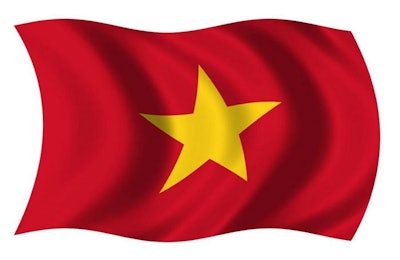
Poultry producers are not alone in facing a series of economic challenges over recent years.
According to a report in Vietnam Net, the Vietnam Poultry Association (VIDA) is warning that the industry is on the brink of collapse. Exacerbating the situation over recent years have been the prolonged impacts of the coronavirus (COVID-19) pandemic, record high costs of inputs, and weak domestic demand. At some times, the selling prices for poultry meat and eggs covered less than 70% of the costs of production in Vietnam.
Another issue raised by the association is the substantial illegal trade in these products from neighboring countries. As well as raising the risks of bringing in diseases, some of these nations still permit the use of feed additives that are banned in Vietnam, such as ractopamine, it says.
Furthermore, official figures indicate growth in the imports of poultry products to Vietnam, according to VIDA. These now account for up to 25% of domestic consumption, it says.
In order to address these issues, the government of Vietnam is taking measures to encourage the local production of crops as feed ingredients, and tightening up on poultry product imports.
According to deputy agriculture minister Phung Duc Tien, these will, respectively, reduce production costs for the sector, and help boost its competitiveness.
Meanwhile, the source reports, the official urged the poultry industry to develop new products in order to gain market share.
Industry calls for help to alleviate feed cost crisis
Reducing feed costs was identified by the director of Viet Tin Nutrition Joint Stock Co. as the most important priority for government support.
Within raw material planning for the livestock and poultry sector, he highlighted the need to ensure supplies of corn at fair prices, reported The Star. He also called for a nationwide campaign to convince consumers about the health benefits of locally produced poultry, and the setting up of supply chains in the country’s food industry.
Meanwhile, the deputy director general of CP Vietnam Livestock Joint Stock Co. proposed the development of rice production in the country as a feed ingredient. He also called for the exploration of new export markets in the region, such as Singapore, Malaysia, Bangladesh, and Myanmar.
In a recent crackdown, officials at Cambodia’s agriculture ministry seized almost 2,000 live chickens illegally imported from Vietnam. This was reported by Khmer Times earlier this month.
More on poultry production in Vietnam
In the first three months of this year, the nation produced more than 551 million poultry, reported Vietnam Plus two weeks ago.
This amounted to a year-on-year increase of 4.2% to 563,200 metric tons, according to government figures. Over the same period, egg production was 4.5% higher at 4.7 billion.
At the present time, there are around 32,200 farms in 55 cities/provinces that are certified as disease-free.
By 2025, the government target is for each province to have at least four districts that are free of listed diseases to World Organisation for Animal Health standards. This should rise to 10 districts by 2030.
Vietnam’s heavy reliance on feed imports
Two months ago, the USDA Foreign Agricultural Service (FAS) was forecasting a 3% rise in Vietnam’s feed output.
The estimated figure of just over 27 million metric tons (mmt) for the current calendar year was to be driven by expansion in the national economy and a recovery in tourism following the COVID pandemic. The total comprises 20.8mmt in livestock and poultry feed, and 6.2mmt for catfish.
Around 75% of the feed ingredients required by the Vietnamese feed sector are imported, according to FAS.
For 2023, this source forecast imports by this sector at 7.94mmt for corn, 6.00mmt for soybean meal, 1.92mmt plant meals and brans, 1.90mmt wheat, and 1.04mmt distillers dried grains with solubles, along with smaller amounts of broken rice and other proteins. In recent years, around 60% of Vietnam’s corn requirements have been sourced from Argentina.
Making up total requirements are local supplies of around 6.7mmt, including 4.1mmt broken rice, 2.1mmt of corn, as well as cassava.
According to an overview in this month’s Poultry International, the outlook for Asia’s poultry and egg industries is generally positive. However, there are still challenges to be faced.















